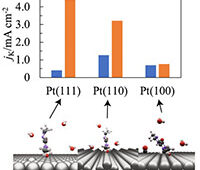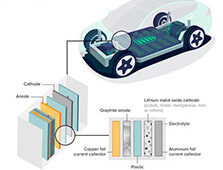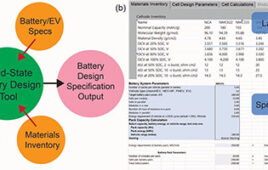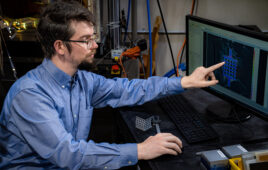Using a new approach, the team built a graphene membrane for use in lithium-air batteries, which could, one day, replace conventional batteries in electric vehicles. Resembling coral, this porous graphene material could replace the traditional smooth graphene sheets in lithium-air batteries, which become clogged with tiny particles during use. |
Resembling broken eggshells, graphene structures built
around bubbles produced a lithium-air battery with the highest energy capacity
to date, according to scientists at Pacific Northwest National Laboratory and Princeton University. This black, porous material
could replace the traditional smooth graphene sheets in lithium-air batteries,
which become clogged with tiny particles during use. As an added bonus, the
team’s new material does not rely on platinum or other precious metals,
reducing its potential cost and environmental impact.
“This hierarchical structure of self-assembled graphene
sheets is an ideal design not only for lithium-air batteries but also for many
other potential energy applications,” says Jie Xiao, the materials
scientist at PNNL who led the study.
Lithium-air batteries could allow for the creation of
long-range electric vehicles, able to travel up to 300 miles
between charges. Comparatively lightweight, lithium-air batteries still suffer
from limited practical capacity and poor cycle life issues. However, this study
showed how to maximize the capacity of the batteries.
“This is critical for applications, including electric
vehicles and energy storage,” says Jun Liu, a materials scientist on the
study and Director of PNNL’s Transformational Materials Science Initiative,
which funded the research.
The team began by combining a binding agent with graphene.
The binding agent dispersed the graphene in solution, like soap disperses
grease in dishwater. The graphene and binder were then added to water and mixed
using a process that created bubbles inside the solution. The graphene and
binder formed and hardened around the bubbles. When the bubbles eventually
popped, hollow spheres of graphene were left behind. The tiny black particles
are only 3 to 4 um in diameter.
Using both modeling and microscopy, the scientists analyzed
the graphene structures and their performance. They performed density
functional theory calculations on the supercomputing system at the National Energy Research
Scientific Computing
Center. They studied the
particles using electron microscopy at the Environmental Molecular Sciences
Laboratory.
The researchers found that the black porous structures store
more than 15,000 milliamp hours per gram of graphene, making it far denser in
term of energy capacity than other materials.
“Many catalysts are studied now for this technology. In
our process we chose not to use precious metal,” says Ji-Guang Zhang, the
group leader in PNNL’s Li-air battery research. “This will greatly reduce
production costs and increase the adoptability.”
The battery is achieving the highest levels of energy
capacity in an oxygen-only environment. When operated in ambient air, the capacity
drops because the water in the air fouls the lithium metal in the batteries.
The PNNL team is working to develop a membrane to block the water and still
allow the necessary oxygen to flow.
“We also want to make the battery rechargeable,”
says Zhang. “Right now, it is not. It is not fully rechargeable. We are
working on a new electrolyte and a new catalyst so that the battery can be
recharged multiple times, potentially for battery backup applications that
require high energy densities.”





